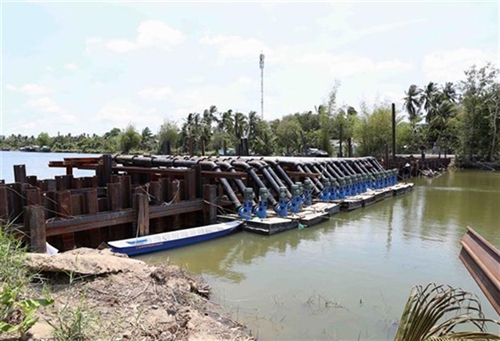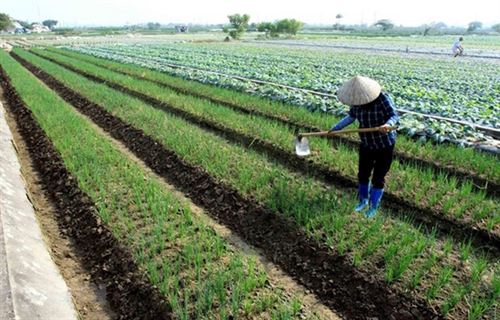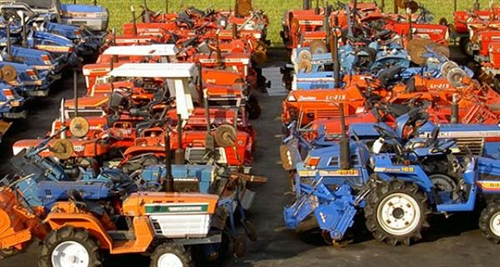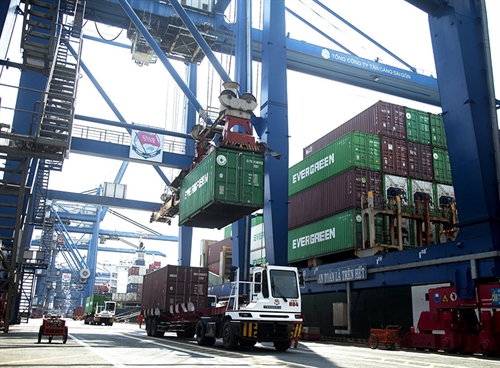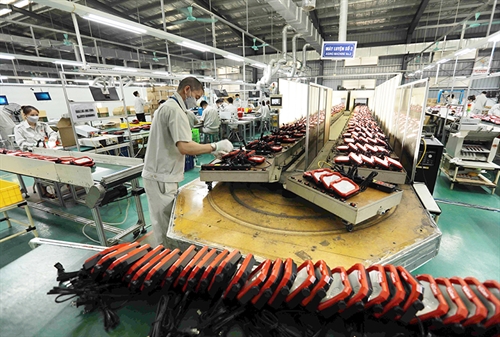In the next decade, the domestic network of vocational education institutions will be able to meet the demand for trained workers of a developing country with modernized industries and upper-middle income.
 |
| Vocational counseling for secondary pupils in Ho Chi Minh City__Photo: Thanh Vu/VNA |
Such is one of the targets set forth by the Prime Minister under Decision 73/QD-TTg dated February 2, approving the master plan on the network of vocational education institutions in the 2021-30 period, with a vision toward 2045.
Accordingly, by 2025, the master plan sets the goals of reducing by 20 percent of public vocational education institutions compared to 2020, while private and foreign-invested ones will be increased to 45 percent of the total.
Meanwhile, all continuing education institutions, occupation-orientation centers and vocational training centers in a district will be integrated into a single vocational education institution.
At the same time, the country expects to have 1,800 vocational education institutions, including 400 colleges, 400 intermediate schools and 1,000 vocational training centers.
By 2030, the number of vocational education institutions will be reduced to 1,700, including six institutions serving as national high-quality vocational training centers, and 12 high-quality regional vocational training centers.
In the 2025-30 period, the number of high-quality vocational education institutions will be increased from 70 to 90, including 60 institutions up to the level of the top 4 ASEAN countries and six others approaching the level of the G20 countries.
In the next decade, vocational education institutions will be able to receive a total of around 4 million trainees per year, of whom collegial and intermediate-level trainees will account for 25-30 percent, and the industrial sector will make up 45 percent, agro-forestry-fisheries sector, 15 percent, and the service sector, 40 percent, of the total number of employees.
The master plan also rolls out region-based distribution of vocational education institutions by 2030. Specifically, the Red River delta, the northern Central Vietnam and Central Coast each will account for 26 percent of the total number of institutions, followed by the southeastern region with 17 percent, the northern midland and mountainous region with 14 percent, the Mekong River delta with 11 percent, and the Central Highlands with 6 percent.
Under the Decision, the Prime Minister assigns the Ministry of Labor, Invalids and Social Affairs to review and submit to competent agencies policies to encourage organizations and individuals to invest in the development of vocational education institutions.
The Ministry will also have to coordinate with ministries, sectors and localities in drawing up and approving lists of major business lines and occupations, as well as institutions that provide training in such major business lines and occupations in each period; and formulating the network of vocational education institutions for ethnic minority people and people with disabilities.
Meanwhile, ministries and relevant agencies are tasked to reorganize vocational education institutions under their management for providing training in specialized business lines and occupations that serve national defense and security as well as those managed by socio-political organizations, socio-professional organizations, government-attached agencies and state enterprises.- (VLLF)
